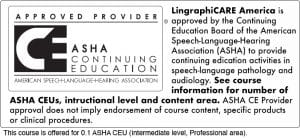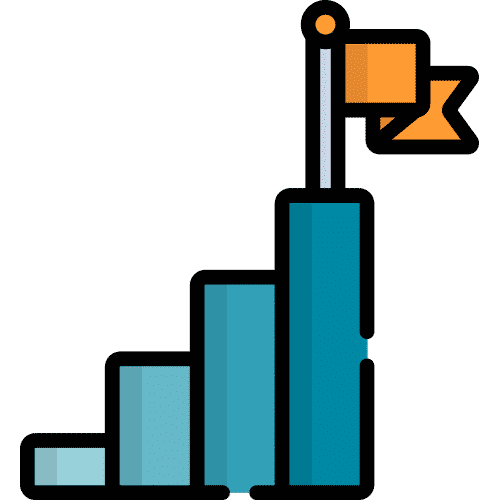 In our course on chronic global aphasia, Speech Language Pathologists (SLPs) will learn about improvements is people with chronic global aphasia using a combination of therapy and structured interactive exercises. We’ll explore key aspects, including:
In our course on chronic global aphasia, Speech Language Pathologists (SLPs) will learn about improvements is people with chronic global aphasia using a combination of therapy and structured interactive exercises. We’ll explore key aspects, including:
-
- characterizing the magnitudes of overall improvements documented among persons with chronic global aphasia following advanced structured therapy that includes computerized home practice
- describing observed patterns between initial WAB and CETI assessment scores and final assignments to either global aphasia or Broca’s aphasia
- discussing the place of outcome studies such as this to the processes of improving clinical practice and identifying topics for follow-on clinical study and experimental research
Lingraphica’s course “Improvements in Chronic Global Aphasia With Advanced Therapy and Home Practice” discusses the improvements seen in people with chronic global aphasia following resumption of therapy. Specifically, we will look at therapy that includes a clinical, computer-based program that uses structured, interactive exercises. SLPs will learn where and at what magnitudes significant improvement occurs at impairment and functional communication levels (according to Western Aphasia Battery and Communicative Effectiveness Index assessments).
The course will introduce specific improvements in chronic global aphasia seen through the use of advanced therapies, keeping in mind the dependence on improvement patterns on the aphasia type at the outset. We will then focus specifically on chronic aphasia. The course will delve into the particulars of the study, including inclusion criteria, demographics of the subject sample, and treatment data.
We will also describe the assessments performed during the study. These include evaluations of impairment level and functional communication. Additionally, we will discuss the assessment administrators and their role in the study. This course will outline the methods used in the study, including students’ tests to identify significant differences of means pre- and post, and a one-way analysis of variance to identify significant subgroup differences.

Finally, we will explore the results of the study. The Western Aphasia Batter (WAB) showed significant differences documented on all subtests. The Communicative Effectiveness Index showed significant differences on 13 out of 16 assessment items. We will also explore the significant differences seen in subjects re-assigned to anomic aphasia upon discharge. The course will conclude with a discussion of the results of the study, focusing on opportunities for improvement in chronic conduction aphasia. We will also discuss the importance for clinical practice, as well as implications for further research.
Improvements in Chronic Global Aphasia With Advanced Therapy and Home Practice
To learn more about improvements in chronic global aphasia, watch our free CE course,
“Improvements in Chronic Global Aphasia With Advanced Therapy and Home Practice.”




